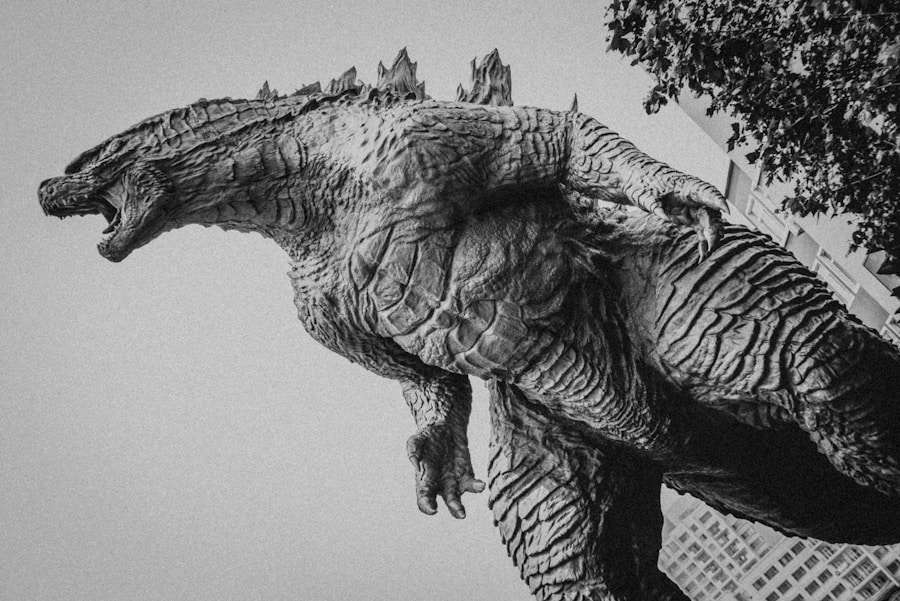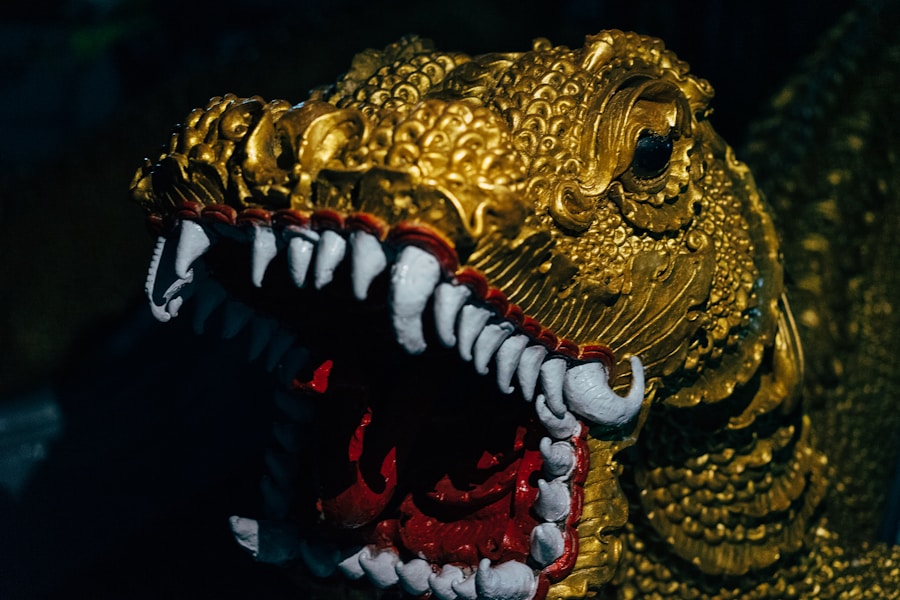When you think of kaiju, the towering monsters that have captivated audiences for decades, Gamera stands out as a unique figure in this genre. Unlike many of his contemporaries, Gamera is not merely a destructive force; he embodies a complex narrative that intertwines themes of friendship, sacrifice, and redemption. The Gamera trilogy, which emerged in the 1990s, revitalized the character and introduced a new generation to the world of kaiju.
This trilogy, consisting of “Gamera: Guardian of the Universe,” “Gamera 2: Attack of Legion,” and “Gamera 3: Revenge of Iris,” redefined what it meant to be a kaiju film, blending thrilling action with deep emotional resonance. As you delve into the Gamera trilogy, you will discover that it is not just about epic battles between colossal creatures. Instead, it explores the intricate relationships between humans and monsters, revealing how these interactions shape both worlds.
The trilogy’s narrative structure allows you to witness the evolution of Gamera from a misunderstood creature to a symbol of hope. This transformation is not only pivotal for Gamera but also for the human characters who find themselves intertwined with his fate. The trilogy invites you to reflect on the nature of heroism and the sacrifices made in the name of protecting others.
Key Takeaways
- Kaiju are giant monsters featured in Japanese films, with Gamera being a popular example in the Gamera Trilogy.
- Gamera’s enemies have tragic backstories that add depth to their characters and evoke empathy from the audience.
- The presence of Kaiju has a psychological impact on human characters, causing fear, trauma, and a sense of helplessness.
- Gamera is portrayed as a symbol of hope and redemption, often coming to the rescue of humanity in times of crisis.
- The visual and cinematic representation of Kaiju tragedy in the Gamera Trilogy is both awe-inspiring and heart-wrenching.
The Tragic Backstories of Gamera’s Enemies
The Consequences of Human Actions
In “Gamera: Guardian of the Universe,” Gyaos is a creature born from humanity’s neglect and environmental destruction. This monster serves as a reminder that our choices can lead to catastrophic outcomes, and its origins evoke a sense of sorrow for a being that has become a product of its environment.
A Victim of Circumstance
Similarly, Legion in “Gamera 2: Attack of Legion” is a kaiju with a tragic backstory. Emerging from a meteorite, it represents an alien threat that is both fascinating and terrifying. However, as its motivations and connection to the Earth are explored, it becomes clear that Legion is a victim of circumstance rather than a mindless monster. The film challenges viewers to consider the broader implications of its existence and how it reflects humanity’s own fears and failures.
Empathy Beyond Good and Evil
By humanizing these enemies, the trilogy elevates the narrative beyond simple good versus evil, inviting viewers to empathize with both sides. This approach adds depth and complexity to the story, making the Gamera trilogy a thought-provoking and engaging experience.
The Psychological Impact of Kaiju on Human Characters

The presence of kaiju in the Gamera trilogy profoundly affects the human characters, shaping their psychological landscapes in ways that are both compelling and thought-provoking. As you watch these characters grapple with fear, loss, and hope, you begin to understand how the looming threat of destruction impacts their lives. For instance, in “Gamera 3: Revenge of Iris,” you witness the emotional turmoil experienced by young characters who have lost loved ones to kaiju battles.
Their grief is palpable, and it serves as a powerful reminder that behind every monster lies a human story filled with pain and resilience. Moreover, the psychological impact extends beyond individual characters to society as a whole. The films explore themes of trauma and recovery in the wake of catastrophic events.
You see communities coming together in the face of adversity, showcasing the strength of human spirit when confronted with overwhelming odds. The kaiju serve as catalysts for change, forcing characters to confront their fears and ultimately find strength within themselves. This exploration of psychological depth adds layers to the narrative, making it resonate on a more profound level.
Gamera as a Symbol of Hope and Redemption
| Aspect | Description |
|---|---|
| Movie Title | Gamera as a Symbol of Hope and Redemption |
| Release Year | 2020 |
| Director | Unknown |
| Main Theme | Hope and Redemption |
| Symbolism | Gamera represents hope and redemption through its actions and behavior |
At the heart of the Gamera trilogy lies Gamera himself—a symbol of hope and redemption amidst chaos and destruction. Unlike many other kaiju who embody pure destruction, Gamera is portrayed as a guardian who fights not only for survival but also for the protection of humanity. As you follow his journey throughout the trilogy, you witness his evolution from a misunderstood creature into a heroic figure who embodies selflessness and courage.
Gamera’s actions often reflect themes of sacrifice and redemption. He willingly puts himself in harm’s way to save others, demonstrating that true heroism lies in selflessness. This portrayal challenges traditional notions of what it means to be a monster; instead of being feared, Gamera becomes an emblem of hope for those who have lost everything.
His battles against formidable foes serve as reminders that even in the darkest times, there is always a glimmer of light—an idea that resonates deeply with audiences seeking inspiration in their own lives.
The Visual and Cinematic Representation of Kaiju Tragedy
The visual storytelling in the Gamera trilogy plays a crucial role in conveying the emotional weight of kaiju tragedy. From breathtaking special effects to meticulously crafted set pieces, each film immerses you in a world where colossal creatures clash against urban landscapes. The cinematography captures not only the grandeur of these battles but also the intimate moments that reveal the characters’ struggles and triumphs.
As you watch these films unfold, you are struck by how effectively they use visual metaphors to convey deeper themes. For instance, scenes depicting destruction are often juxtaposed with moments of quiet reflection among human characters. This contrast emphasizes the fragility of life amidst chaos and serves as a poignant reminder that every battle has consequences.
The filmmakers skillfully blend action with emotional depth, creating a cinematic experience that lingers long after the credits roll.
The Moral and Ethical Dilemmas of Gamera’s Battles
Moral Ambiguity in the Face of Destruction
As you engage with these narratives, you are prompted to consider questions about responsibility, sacrifice, and the consequences of violence. Each confrontation between Gamera and his enemies raises profound issues about what it means to protect humanity while also grappling with the destruction that ensues.
The Cost of Victory
For instance, in “Gamera 2: Attack of Legion,” you witness characters grappling with difficult choices as they navigate their roles in combating an alien threat. The film challenges you to think critically about the cost of victory—how many lives are worth sacrificing for the greater good?
Inviting Reflection and Self-Examination
These dilemmas add layers to the narrative, inviting you to reflect on your own values and beliefs regarding conflict and resolution.
The Evolution of Kaiju Storytelling in the Gamera Trilogy
The Gamera trilogy represents a significant evolution in kaiju storytelling, moving beyond simplistic narratives to embrace complexity and depth. As you explore each installment, you will notice how the films build upon one another, creating an interconnected universe that enriches your understanding of both Gamera and his adversaries. This evolution reflects broader trends within the kaiju genre itself, as filmmakers seek to push boundaries and challenge conventions.
In contrast to earlier kaiju films that often relied on formulaic plots, the Gamera trilogy weaves intricate character arcs and thematic explorations into its narrative fabric. You are invited to witness not only epic battles but also personal journeys filled with growth and transformation. This shift towards character-driven storytelling allows for a more immersive experience, making you feel invested in both Gamera’s fate and that of humanity.
Impact and Legacy of the Gamera Trilogy on Kaiju Genre
The impact of the Gamera trilogy on the kaiju genre cannot be overstated. As you reflect on its legacy, it becomes clear that these films have redefined expectations for what kaiju cinema can achieve. By blending thrilling action with emotional depth and complex narratives, they have set a new standard for future filmmakers exploring similar themes.
Moreover, the trilogy has inspired countless creators within and beyond Japan’s film industry. Its influence can be seen in contemporary kaiju films that prioritize character development alongside spectacular visuals. As audiences continue to seek stories that resonate on multiple levels, the Gamera trilogy stands as a testament to the power of storytelling within this beloved genre.
In conclusion, as you immerse yourself in the world of Gamera and his adversaries, you will find yourself drawn into narratives rich with emotion and meaning. The trilogy invites you to explore themes of hope, redemption, and moral complexity while challenging traditional notions of heroism and monstrosity. Through its innovative storytelling and visual artistry, it has left an indelible mark on both kaiju cinema and popular culture at large—an enduring legacy that continues to inspire new generations of fans and filmmakers alike.

